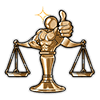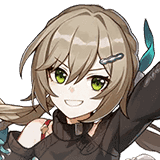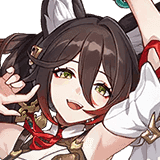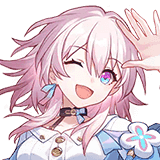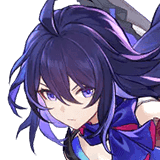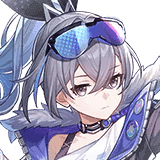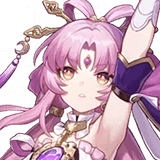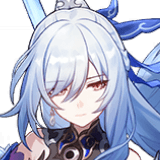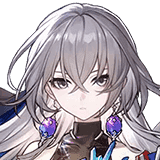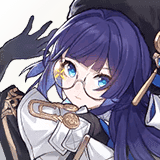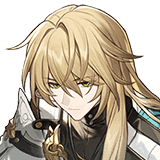Introduction
As a turn based RPG game, team building is an extremely important aspect of the combat gameplay in Honkai: Star Rail. This guide aims to provide some general recommendations and tips for how to build effective teams in Honkai: Star Rail. If you are interested in team recommendations for specific Characters, be sure to check that Character’s page on the website for a more detailed breakdown.
When building a team, take the following factors into consideration.
- Team Playstyle
- Enemy Elemental Weaknesses
- Team Synergy
- Skill Point Utilization
Team Playstyle
The first thing to think about when building a team is what kind of playstyle do you want to build a team around. Below are some general team playstyles for consideration:
Aggressive/Proactive Build
Focuses on the offensive with the goal of taking out the enemies as fast as possible. Teams in this playstyle will focus on one Main Damage Dealer, often called a hyper carry, that is supported by at least two Offensive Supports who are focused on increasing the hyper carry’s damage as much as possible via offensive buffs on the hyper carry or inflicting debuffs on the enemies that would cause them to take more damage.
Defensive/Reactive Build
Focuses on keeping the team alive while whittling away at the enemy. This type of team will generally run multiple Defensive Supports that provide your team with sustain in the form of either healing and/or shields while relying on a damage dealer that can function reasonably well with minimal or no support to whittle away at the enemy’s HP. Some teams will also utilize crowd control effects such as freezing or imprisoning the enemy to further increase the team’s survivability.
Another thing to keep in mind while building your team is how to keep your team members alive. It is recommended that you use at least one healer or shielder in order to mitigate the damage that your team will be taking. There are plenty of hard hitting enemies and enemies with AoE attacks that can and will take down your team if you are not careful, especially early on in the game when your team is underleveled and undergeared.
Enemy Elemental Weaknesses
After you have come up with the game plan for your team, the next thing to consider is what elemental weaknesses the enemy has.
Using Characters whose element the enemy is the weak to will provide a considerable advantage during combat as one of the core combat mechanics in Honkai: Star Rail revolves around dealing damage of the elemental type that the enemy is weak to in order to break their Toughness bar. Breaking the enemy’s Toughness bar serves both to increase your team’s damage as well as delaying that enemy’s turn. On top of these effects, enemies are also more susceptible to damage from elements that they are weak against. When combined together, these effects make teams that can exploit the enemy’s elemental weaknesses far more effective than teams that cannot.
Note that you do not need to have every Character in your team be of an element that the enemy is weak against. Generally speaking, Characters who are good at breaking the enemy’s Toughness bar (Breakers) should be of an element that the enemy is weak against. This will typically be your damage dealer(s), though some supporting Characters, such as Asta and the Fire Trailblazer, are also effective in this role. Besides these Breakers, the rest of your team do not necessarily need to be of an element that the enemy is weak against.
Another thing to note is that all enemies in this game have multiple elemental weaknesses, so it is not necessary to build a mono-element team. 2, 3, and even 4 element teams can function perfectly fine if you have the enemy’s elemental weaknesses sufficiently covered.
Team Synergy
After elemental weaknesses, the next thing to consider is to pick Characters for your team that have synergies with one another. Think about how the Characters in your team can complement each other, whether that be shoring up each other's weaknesses, enabling new approaches to combat, or enhancing your Characters’ combat abilities to the next level. Alternatively, it is also important to take in account any anti-synergies that Characters may have. Some Characters just do not work well together in a team and even if they are strong individually, it may be a better idea to put them on different teams, so that their respective strengths can be better utilized.
Sources of synergies come in many forms, but mainly will come from how the Characters’ kits interact with one another. It can also come from the gear (Light Cones and Relics/Planetary Ornaments) that they wear as well.
Skill Point Utilization
Skills Points is a key resource that you will need to manage effectively in order to bring out the full potential of your team. Every Character in your team shares one Skill Point pool, so it is important to factor in what your Skill Point generation and consumption looks like when you are building your team. Aim for building a team that is at least Skill Point neutral. Skill Point neutral means that you are generating Skill Points at the rate that you are consuming them. Being Skill Point neutral will allow your damage dealer(s) to function at their best since it means that they will be able to use their higher damaging ability (which is typically their Skill) every turn.
Generally speaking, damage dealing Characters tend to be Skill Point negative (consumes more Skill Points than they generate) while Defensive Supports tend to be Skill Point positive (generates more Skill Points than they consume). Offensive Supports are a mixed bag when it comes to the Skill Point economy as they can be Skill Point positive, neutral, or negative depending on how you use them.
Team Compositions
General / Defensive
- Main damage dealer
- Offensive support
- Defensive support
- Flex slot
As the name suggests, this team composition serves as the general template when it comes to team building and is capable of handling most if not all of the combat challenges the game has. If you are unsure about how to build a team, you can never go wrong with using this team composition as your starting point and then make changes to it as you see fit.
This team takes a balanced approach to combat by using one Character as the main damage dealer who is then supported by the rest of the team with buffs and sustain (shields and heals). While this will result in slower clear time compared to Hypercarry od Dual carry compositions, it's much safer and easier to play, especially in the early game when you lack good Relics. But even later down the road, this composition is the go-to one when you need to conquer the hardest content in the game (like Swarm Disaster) as without double Sustain characters, you will often die on boss fights.
Example Team Compositions
Hyper Carry
- Main damage dealer
- Offensive support
- Offensive support
- Flex slot
This team composition is a variant of the Generalist team that focuses on buffing up one damage dealer (the hyper carry) who will be the primary source of damage for the team. A hyper carry team will generally run two Offensive Supports and one Defensive Support to provide a high amount of damage buffs for the hyper carry while still maintaining a certain degree of survivability.
While it is possible to replace the Defensive Support slot with a third Offensive Support for a pure glass cannon team, it is not recommended to do so unless you are absolutely confident that you can win the battle quickly enough to not have to worry about your team’s survivability.
Example Hyper Carry Team Compositions
A single target focused hyper carry team that revolves around pumping up Seele’s damage with Tingyun and Silver Wolf. This team will want to focus down targets one by one before moving on to the next target.
This hyper carry team places an emphasis on Blast attacks while also being capable of dealing out great damage to single targets. Bronya and Pela amplify Jingliu's damage - the first will allow her to attack more often and Pela will shred the enemies' DEF, making Jingliu's attacks do more damage.



